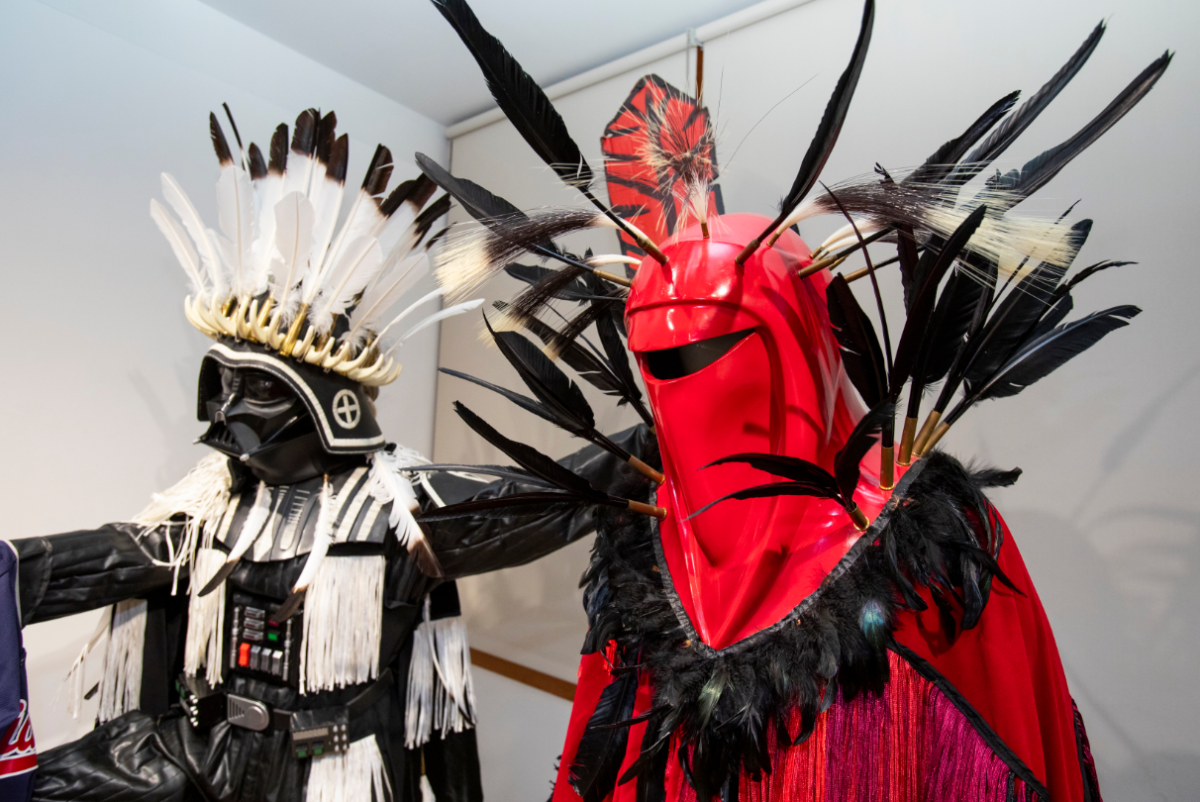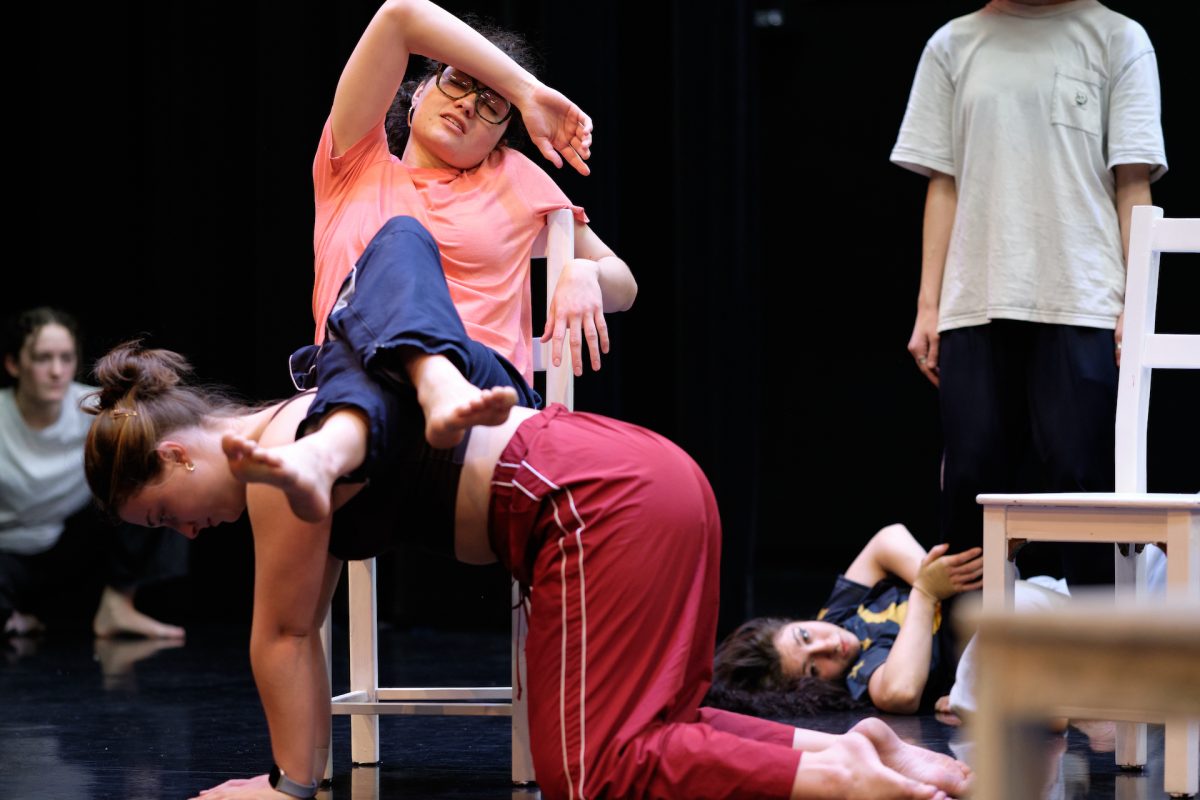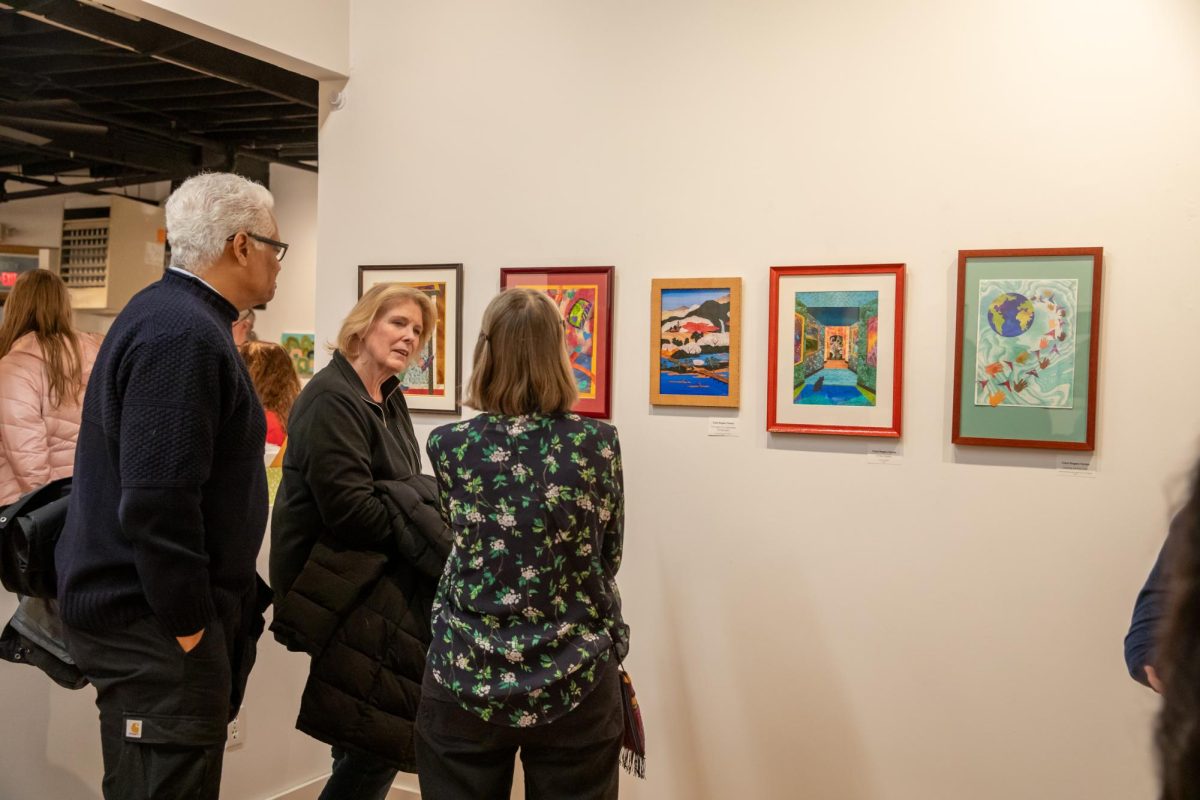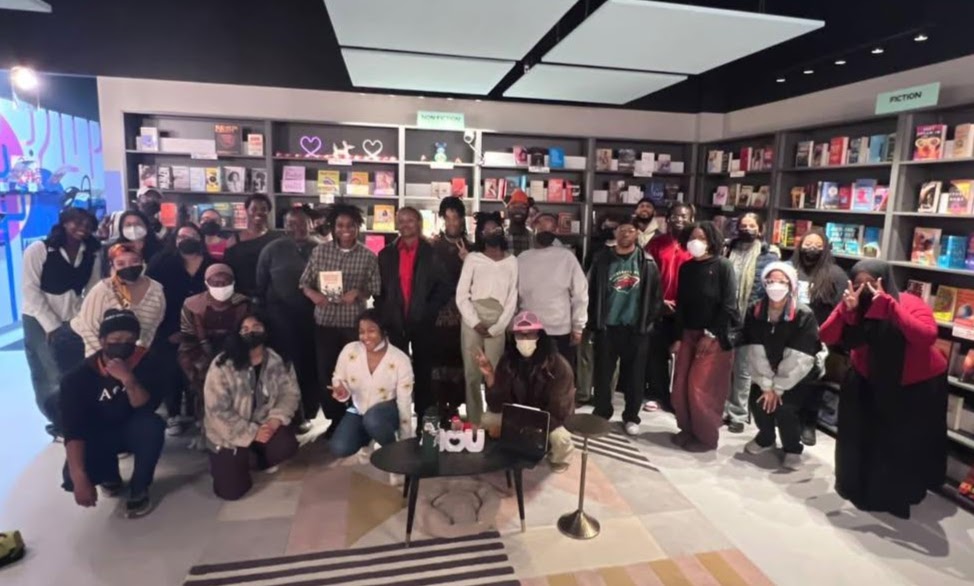Despite the word “joy” in its title, Camden Stevens wants visitors to his latest gallery show to leave their optimistic expectations at the door.
“Joy in the Next Room,” the University of Minnesota alum’s latest artistic endeavor, seeks to explore a feeling just shy of melancholy and nostalgia that’s neither happy nor sad.
“It’s like you see a father reading to his child on the train,” Stevens said to the crowd at the show’s opening night on Friday. “It’s such a sincere and special moment that you’re just a little bit removed from. That’s just such a relatable feeling and nobody talks about it or has the words for it.”
Stevens enlisted fellow Twin Cities artists Jack Drummond, Maksym Khutorianskyi, Lee Noble and Vernon Vanderwood to help visually articulate that indescribable feeling.
Their attempts at capturing it range from a woven geometric tapestry by Vanderwood to Drummond’s paintings of compressed and blurred dashcam stills to a painted scene of Stevens’ iconic character “STARGAZER” pushing itself off of a cliff, framed within an iPod.
The latter piece, titled “Post,” embodies Stevens’ permission to himself to take a step back from the character that began his artistic career.
“I told myself that I need to move on from this idea and that I’m OK moving into a new one,” he said in an interview.
The iPod evokes skipping a song that you’ve loved for years but perhaps just isn’t right for the current mood. The figures’ shattered heads are like idea light bulbs that got too hot and burst, leaving only the darkness of “What now?”
The show inhabits the Landmark Gallery of Schmidt Artist Lofts in St. Paul, a stark, white rectangular enclave carved out of the gargantuan former brewery that’s as liminal as the show’s subject matter.
Stevens said he and his fellow artists used the odd space to their advantage during installation.
Vanderwood’s tapestry, “Boundary Weavings,” is suspended between two white vertical beams, its black background and white patterned side facing into the gallery. The inverted opposite side faces the front wall.
Its placement allowed for the experience of sneaking between the beam and the tapestry, an action that felt almost elicit but which Stevens delighted in.
“That’s just such an odd experience, but I love when people get to have new experiences with the work like that,” he said.
The experience of “Joy in the Next Room” also went beyond the visual for Em Inserra, a University senior who briefly worked with Stevens at Radio K.
Inserra said she introduced Stevens to the music of Cindy Lee, whose experimental album “What’s Tonight to Eternity” acts as the show’s score.
Despite not knowing each other well, Stevens sent Inserra a personal note about how the music, along with Inserra’s poetry, inspired him and shaped “Joy in the Next Room.”
“It was surprising to hear someone I was removed from was inspired by my art,” Inserra said.
Removed community, or being affected by someone or something you don’t know, is a recurring theme throughout the show. University fine arts student Drummond evokes the feeling through digital stills from his dashcam represented in paint.
Drummond said last May he started going through the footage of the camera every two weeks and selecting what he would like to work with.
“It’s exploring moments past and translating them into painting,” he said. “You may not have the feeling anymore, but it’s nice to know that you felt it.”
Drummond never paints an image exactly how it appears — there’s always some deep frying, cropping and compression that occurs.
“I don’t want them to look exactly like the image, because then what’s the point,” he said.
Not to mention the camera films through his dirty windshield.
The result is blurry, garbled paintings that are both strikingly familiar and absolutely anonymous.
Having moved to the U. S. from England as a child, Drummond described being fascinated by Midwestern culture — especially big lifted trucks — while still seeing its absurdity from an outsider’s perspective.
According to Inserra, who was at the show’s opening, people kept guessing where the location in fan-favorite “Handystop” is, but no one got it right.
After a second successful show and more than a year after college, Stevens was frank about his current feeling of artistic limbo.
“There’s a bit of mourning that takes place after college. You lose all of these resources and a free studio space you can use whenever you want,” Stevens said. “I’ve found that I need to make space for my creativity.”
A valuable tool for Stevens has been “The Artist’s Way” by Julia Cameron, a self-help book meant to help with artist’s block by intentionally making time to be creative.
Stevens’ practice of intentionality is imbued into every aspect of “Joy in the Next Room,” from the arrangement of the pieces to the music on the promotional Instagram stories to the all-black outfit he sported at the opening.
“I was really inspired by the show,” Inserra said. “You can do creative things. It can mean something to you that it doesn’t mean to others. That’s really the point.”
“Joy in the Next Room” will be up until Wednesday, Feb. 19. Gallery visits are by appointment only and can be made by emailing [email protected].















Hugo Espino
Feb 12, 2025 at 7:34 am
Buen trabajo Cam , muchas felicidades, eres un gran ARTISTA